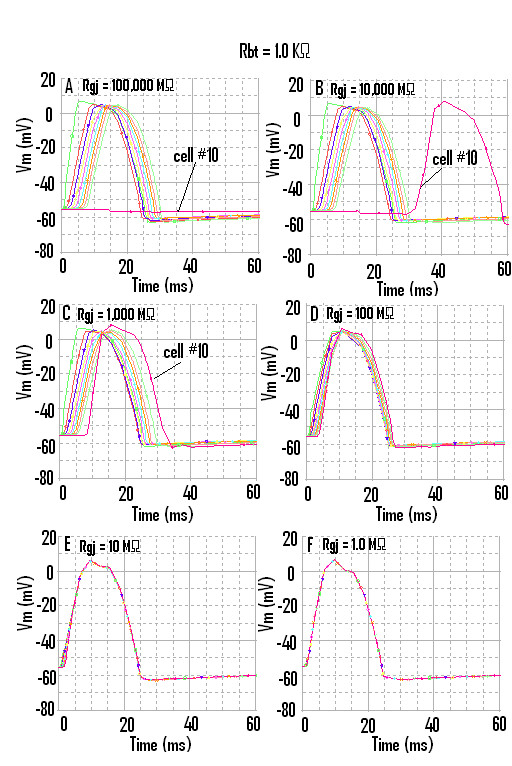Figure 3.

Propagation of APs simulated by PSpice along a chain of ten smooth muscle cells. The termination resistance at the ends of the chain (Rbt) was 1.0 KΩ, similar to that for the fluid bathing the surface of the long chain. The six panels show the effect of varying the number of gj-channels from zero (panel A, Rgj = 100,000 MΩ), to one (panel B, Rgj = 10,000 MΩ), to 10 (panel C, Rgj = 1,000 MΩ), to 100 (panel D, Rgj = 100 MΩ), to 1000 (panel E, Rgj = 10 MΩ), to 10,000 (panel F, Rgj = 1.0 MΩ). At the Rbt of 1.0 KΩ, the last cell in the strand (cell #10) failed to become excited (panel A), or it fired after a long delay (panel B), when there were no gj-channels (A) or only one gj-channel (B), and so transmission from cell to cell relied on the EF mechanism. Thus, there was a prominent end (edge) effect. In addition, the overshoot amplitude of the AP in cell #10, as well as in cell #1, was greater (A, B, C). Thus, end effects occurred at both ends of the strand. Note the presence of a hyperpolarizing after-potential following the repolarizing phase of the AP. When there were many gj-channels (EF), the APs of all 10 cells were superimposed, indicating extremely fast propagation velocity.
